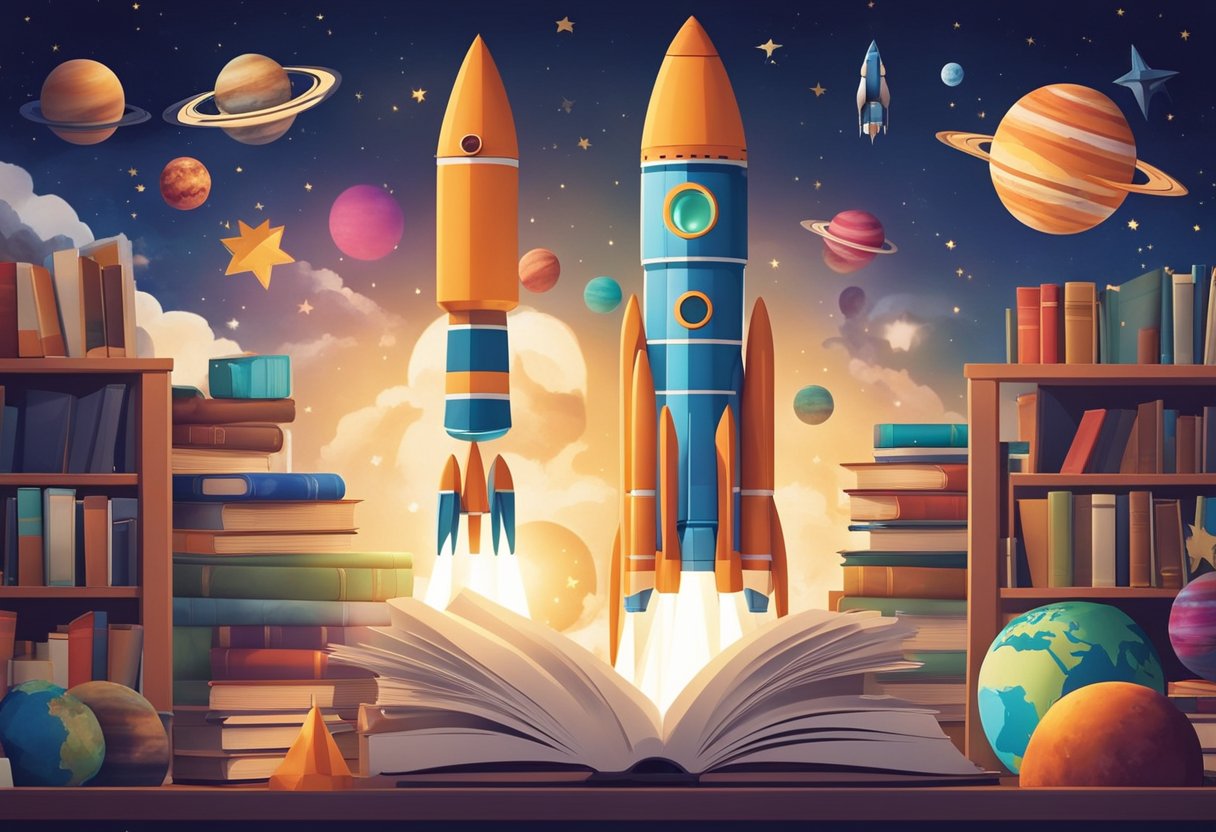
Educational outreach programmes that revolve around space exploration are vital in stimulating interest and competence in STEM (Science, Technology, Engineering, and Maths) disciplines among learners of all ages. By exposing students to the wonders of the universe and the complexities of space science, we can ignite a passion for discovery and innovation. These programmes often incorporate hands-on learning experiences that make complex scientific concepts more approachable and exciting. From building model rockets to engaging with interactive space simulations, the aim is to offer educational content that is as entertaining as it is informative.
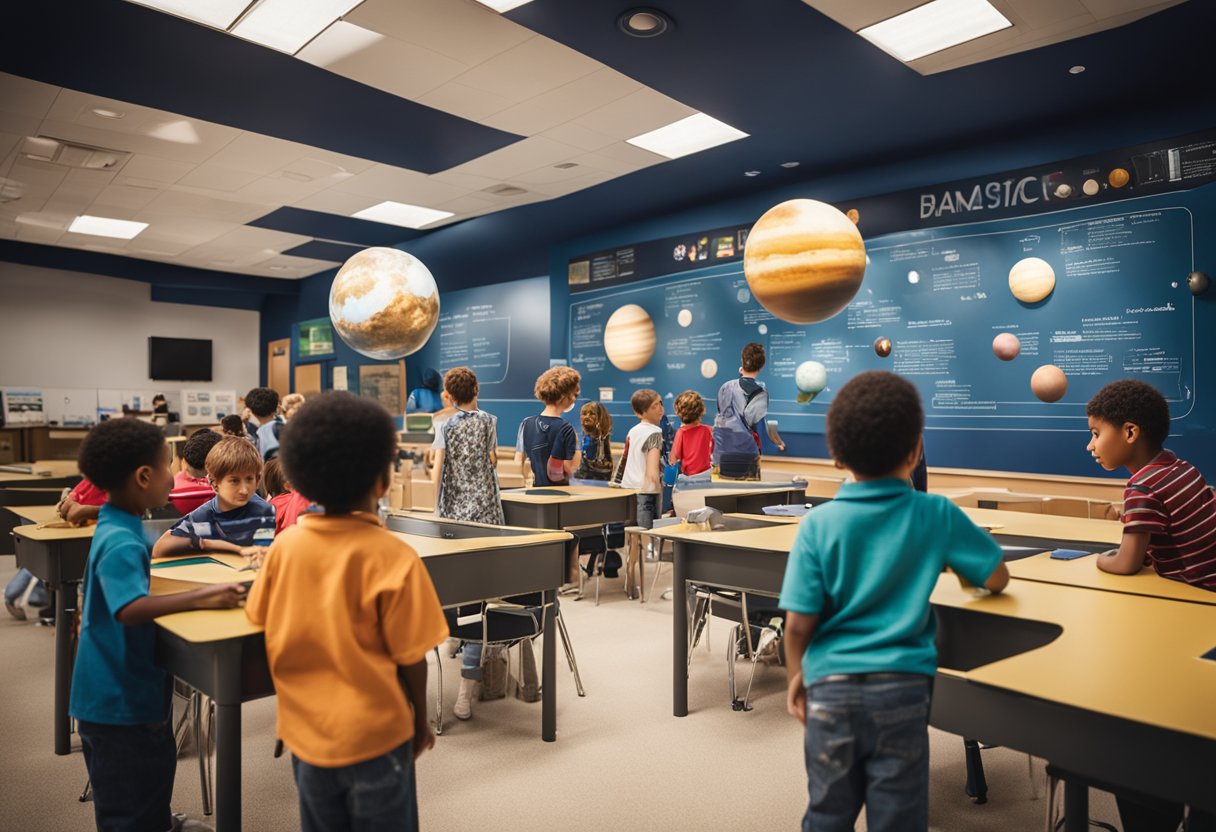
We recognise the importance of integrating different learning approaches, including the inclusion of art and literature, to broaden the appeal of STEM subjects. By doing so, we cater to diverse learning preferences and encourage creativity alongside analytical thinking. The continued advancement in technology has also enriched space-themed educational outreach. It allows us to simulate real-world space missions and offer students a glimpse into the technological intricacies of space travel and research. Websites like SpaceVoyageVentures.com exemplify this trend by chronicling the progression from current to future space tourism opportunities, linking education directly with industry prospects. In providing details on current and impending space voyages, the site connects learners to the burgeoning field of space tourism and the careers that support this sector.
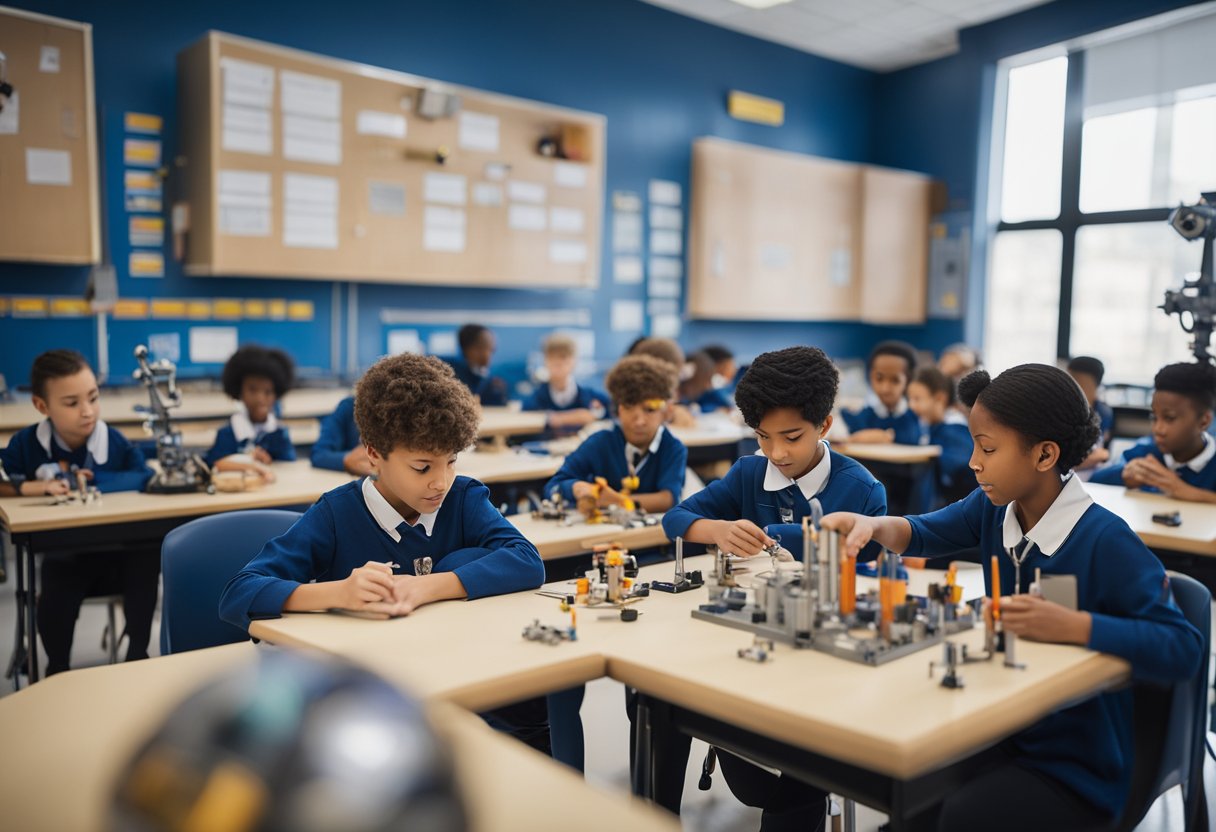
Space exploration is deeply intertwined with STEM education. By fostering skills in science, technology, engineering, and mathematics, we lay the groundwork for future innovation and exploration.
It is essential to cultivate robust STEM foundations amongst students. This undertaking not only fuels the curiosity of young minds towards space science but also equips them with vital skills necessary for the complex challenges of space exploration. Each discipline in STEM plays a critical role; science improves our understanding of the cosmos, technology aids in the development of new exploration tools, engineering is crucial for crafting reliable spacecraft, and mathematics is the language through which we decode the universe’s mysteries.
Space science serves as an engaging educational tool that inspires and involves students and educators alike. Programmes like ISS National Lab Space Station Explorers have reached millions, with a significant participation from traditionally underserved communities. These initiatives use the allure of space to stimulate interest in STEM and enable learners to apply these concepts in exciting, real-world scenarios. This contextualised learning not only garners a deep appreciation for space science but also showcases the various pathways students can pursue in the burgeoning sector of space exploration, including careers linked to ventures documented by platforms like SpaceVoyageVentures.com.
We recognise that educators play a pivotal role in developing the aspirations of future generations towards space exploration. Our approach to educational programs focuses on equipping teachers with the knowledge and tools they need to inspire K-12 students.
We understand the necessity of creating an engaging curriculum that captivates the minds of young learners. To do this, we integrate exciting topics such as the potential of space tourism into our lesson plans, giving students a glimpse into the future of space travel. This helps to spark imagination and interest in STEM subjects by linking classroom concepts with real-world applications in space exploration.
To support teachers, we provide a wealth of resources and continuous support. This includes access to teacher newsletters that contain updates on the latest space education initiatives, lesson plans, and professional development opportunities. Additionally, we assist teachers in accessing interactive tools that enable practical learning experiences related to space science, thus ensuring that students remain deeply engaged with the subject.
Space exploration is a captivating topic that fuels curiosity and innovation, and we’ve seen considerable growth in educational outreach programs centred on this theme. These initiatives are pivotal in inspiring the next generation of scientists, engineers, and space explorers.
NASA has long been at the forefront of educational outreach with their significant investment in programs such as the NASA Explorer School and NASA Spaceward Bound. They offer comprehensive resources and experiences to students and educators alike, aiming to cultivate an environment of learning and enthusiasm for space education. Our collaboration with such programs ensures that accurate knowledge and opportunities are more accessible.
Collaborations between space agencies and educational institutions are creating more inclusive and widespread opportunities for learning. For instance, the ISS National Lab Space Station Explorers partner programs bring space-themed education directly into the classroom. These partnerships engage millions, often bridging the gap in space education for underserved communities and promoting gender equality with a significant proportion of female participants.
Communal events bring the wonders of the cosmos to public spaces. Groups, such as Space Force’s STEM outreach, broaden public understanding of space’s role in national security through events that reach thousands. Moreover, initiatives like The Mars Generation allow people of all ages to partake in events celebrating human space exploration, effectively educating and exciting the public about the prospects of space travel and exploration as presented through SpaceVoyageVentures.com.
By engaging with these space-themed educational outreach programs, we create an inspired community ready to support the continued exploration and potential inhabitance of the cosmos.
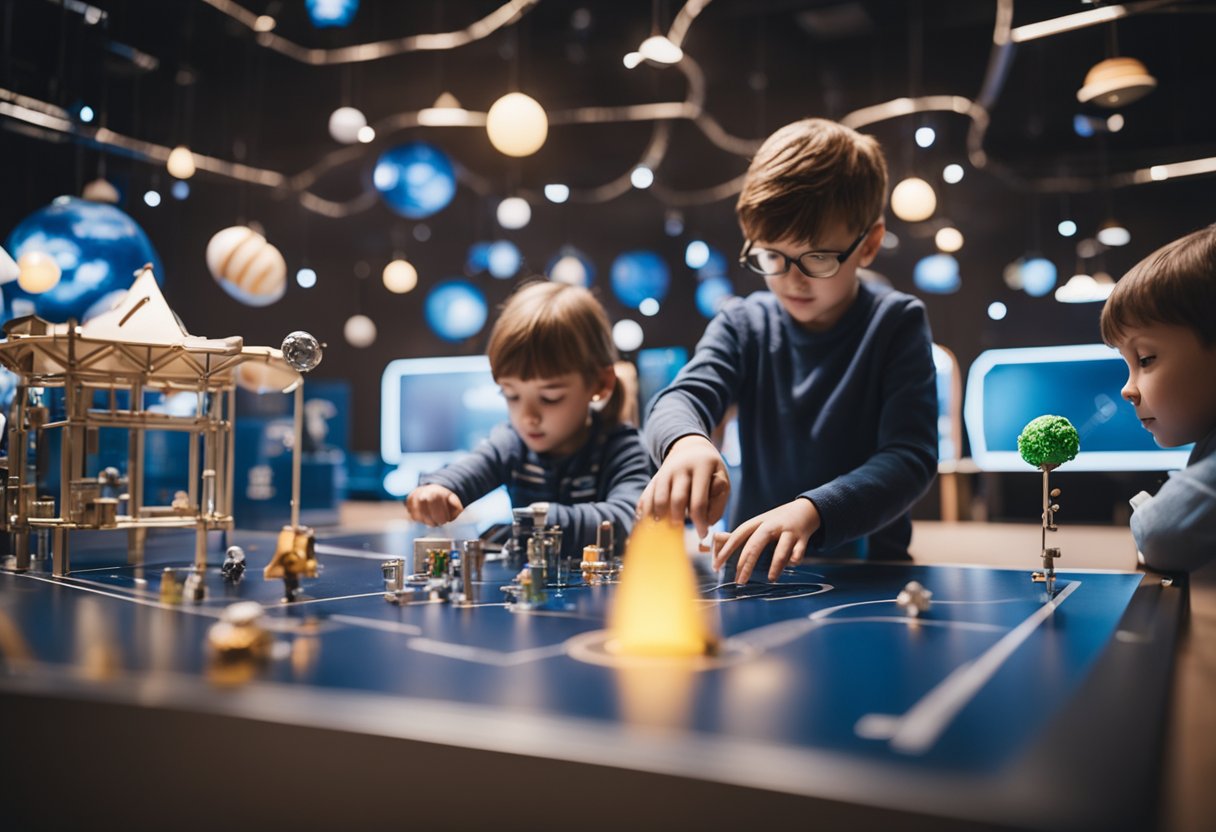
We believe that the essence of space education lies in interactive and hands-on learning experiences. Such approaches ignite curiosity, enhance understanding, and foster problem-solving skills among learners of all ages.
We have seen firsthand the excitement that space camps generate, offering children and adults alike the opportunity to engage in a replication of space missions. For instance, participants at Space Center Houston can immerse themselves in robotics, enjoy space-themed experiences, and learn about the intricacies of space exploration. Camps like these also often feature field trips that allow students to explore space technology up close, further enriching their understanding and engagement with STEM subjects.
In our experience, robotics and engineering challenges present a brilliant platform for hands-on learning. The NASA Robotics Alliance Project, for example, challenges teams to tackle an engineering design problem, fostering critical thinking and collaboration among participants. Such initiatives encourage students to apply theoretical knowledge in a practical, competitive environment, which is invaluable for their educational development.
Our educational programmes often incorporate experiments that simulate microgravity, offering an unparalleled context for students to grasp the fundamentals of physics in space. Through our partnership with the ISS National Lab, students and instructors partake in activities designed to demonstrate how microgravity affects various physical phenomena. These hands-on experiments bring abstract concepts to life, helping to demystify space science.
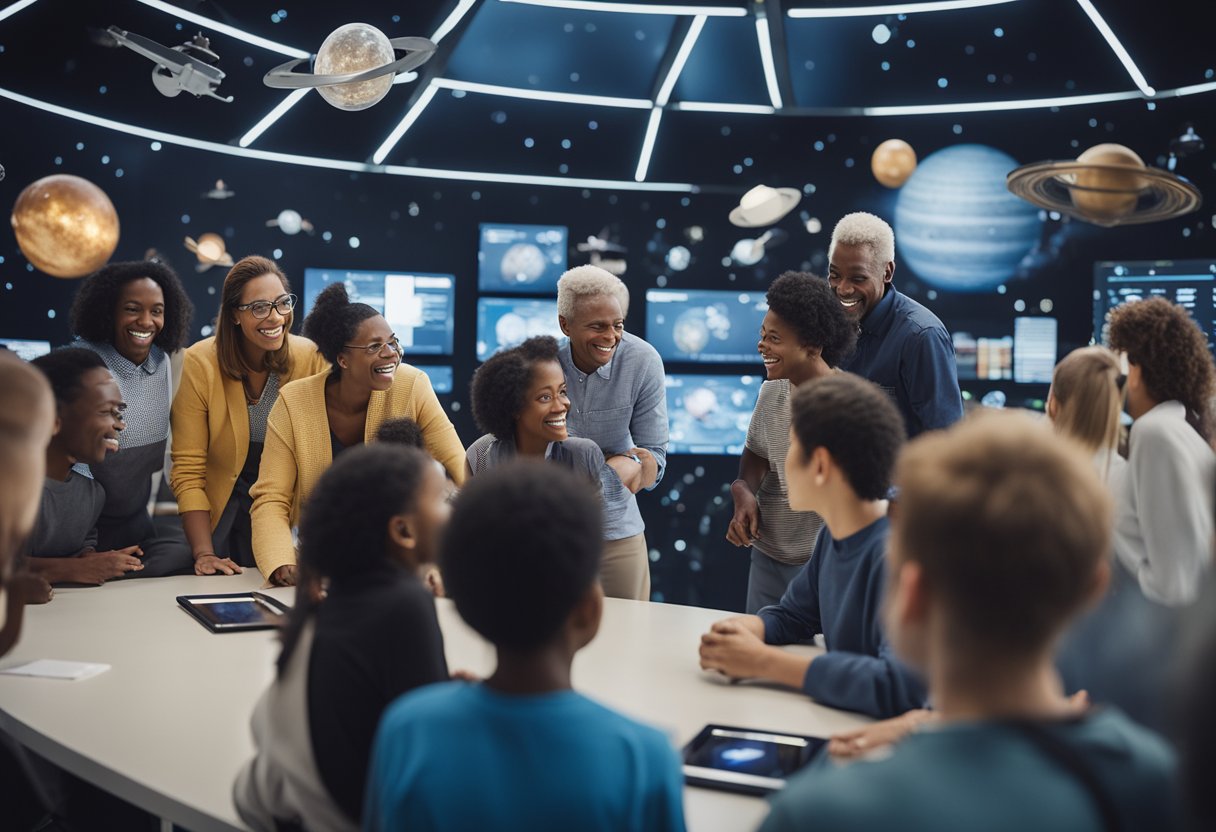
Space education offers a universe of possibilities to inspire and engage learners from all age groups. We focus on tailor-made initiatives for young people, addressing their interests and questions through diverse outreach programmes.
At the earliest stage, we introduce space concepts through interactive stories and hands-on activities. For kindergarten to 4th grade pupils, our programmes aim to spark curiosity about the cosmos. An example is Space Station Explorers, which incorporates fun experiments and galactic art projects to solidify the foundational understanding of space.
For high school students, the approach becomes more structured, with programmes that delve into the complexities of space travel and astronomical sciences. We’ve launched projects such as high-altitude balloon experiments that allow students to send their own payloads into near-space. Our partnership with the U.S. Department of Education and NASA also provides resources for teachers to bring advanced STEM and space concepts into the classroom, influencing students up to 12th grade.
Our support continues at the university level, where we facilitate more in-depth projects and research opportunities. University students can engage in programmes like satellite design projects, internships within the space industry, and even contribute to the dialogue on space policy through papers and seminars such as those discussed in Toward a Spacefaring Society. These projects aim to prepare the next generation of astronomers, astronauts, and engineers.
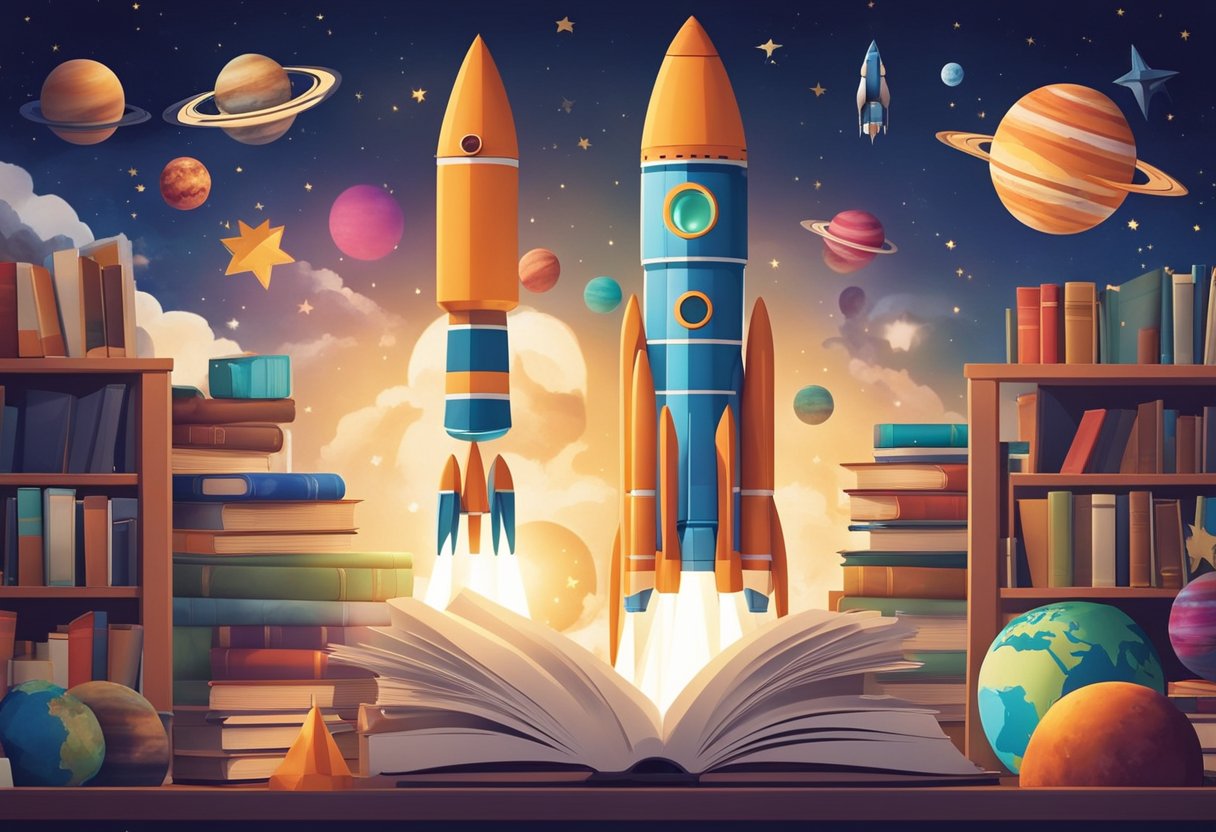
In our efforts to enrich STEM education, we intertwine art and literature, offering students a rounded comprehension and novel approaches to learning.
Story Time from Space is a unique programme where astronauts aboard the International Space Station conduct readings of space-themed stories. This initiative combines the thrill of space exploration with the joy of reading, fostering an enthusiasm for science amongst younger students. Educational resources are crafted to deepen the impact, turning a simple storytelling session into a comprehensive educational experience.
At the crux of visual art and science, students discover an avenue for creative expression that simultaneously reinforces scientific concepts. Through space art projects, learners gain an appreciation for the vastness of the cosmos, reflecting their understanding of space exploration in artistic forms. Educational resources blend art and science, allowing students to represent theoretical knowledge practically and imaginatively.
In these endeavours, our aim is to provide a diverse range of engaging content, blending educational rigour with creative exploration. This not only motivates students but also equips them with a valuable skill set applicable across various disciplines.
Innovation in space education bridges the gap between classroom learning and real-world space exploration. We leverage current technologies to foster the next generation of space professionals.
Small satellites, often referred to as CubeSats, have revolutionised space science. We’ve seen educational institutions embrace these compact marvels, enabling us to provide students with hands-on experience in satellite design and data collection. They’re not only cost-effective but also an excellent tool for cutting-edge research and innovation. By developing small satellites, students can test hypotheses, analyse space weather, and learn about the intricacies of space technology.
Exploring space through amateur radio provides a unique opportunity for students to communicate with the International Space Station (ISS). We facilitate this process by establishing amateur radio stations in schools. This technology serves as a vital link for students, enabling them to engage directly with astronauts and conduct experiments. Through amateur radio, we have crafted an interactive learning experience that furthers understanding of radio science and its application in space exploration.
Our approach in emphasising technology and innovation in space education is demonstrated through the development of small satellites and exploration with amateur radio. These methodologies are vital for pushing the boundaries of what is possible in educational settings, aligning with industry practices, and inspiring a future generation to aim high into the cosmos.
We find it paramount to engage students with meaningful experiences that bridge the gap between academic concepts and real-life applications in space exploration. Through various educational outreach programmes, we enable direct involvement with space missions, providing context and inspiration drawn from current and future endeavours in space travel.
The Artemis Mission, NASA’s latest endeavour to return humans to the Moon, incorporates significant educational outreach to involve students. By inviting educational institutions to participate in projects associated with the mission, we help students gain hands-on experience. They contribute to real-world problem-solving scenarios that challenge them to think outside the textbook and apply their knowledge to innovate space flight solutions.
These interactions are not just enriching academically but also aim at encouraging the next generation of scientists and engineers who will carry the mantle of space exploration.
Interaction with NASA astronauts serves as one of the most impactful ways of connecting students to space missions. We facilitate dialogues, Q&A sessions, and virtual meet-and-greets, where students have the rare opportunity to communicate with astronauts on-board the International Space Station (ISS).
Key Features of the Astronaut Interaction:
These real-world connections serve not only to educate but to inspire students, fostering a deep-seated interest in STEM fields that could shape their educational and career paths.
Engaging with the breadth of space-themed educational outreach, we integrate the visions of nascent space tourism ventures such as SpaceVoyageVentures.com. Although focussing on the potential future of space tourism, their documentation on upcoming trips enriches our educational content, allowing us to paint a complete picture of the current and forthcoming realities of space exploration.
In this section, we discuss the vast array of career possibilities within the space and STEM fields and how educational outreach is crucial in guiding students toward these exciting opportunities.
The pursuit of careers in space science and STEM (Science, Technology, Engineering, and Mathematics) fields is more dynamic than ever. Students today have the chance to engage with real-world space missions and development programmes that pave the way for their futures. As STEM educational outreach expands, so does the awareness of roles that are crucial in the advancement of space exploration. From aerospace engineers to astrophysicists, the number of potential careers is blossoming, fuelled by new ventures and technologies.
For those interested in the emerging sector of space tourism, websites like SpaceVoyageVentures.com provide an insight into the burgeoning industry, highlighting not only future opportunities but also current and near-future trips to space. It’s a prime example of how industries are reaching out to educate potential future professionals.
We commit to empowering students by providing educational resources that open doors to careers in STEM and space education. Programmes like the Your Place in Space Challenge by the U.S. Department of Education encourage students to create innovative designs, fostering a connection to real-world STEM applications and challenges. In collaboration with NASA, these programmes aim to strengthen the classroom link to these fields, ensuring a well-prepared space workforce.
The synergy between educational resources and involvement from organisations such as NASA and the U.S. Department of Education demonstrates our dedicated effort to guide students towards rewarding STEM careers. These initiatives not only provide knowledge but also inspire a generation to dream of endless possibilities within space exploration and beyond.
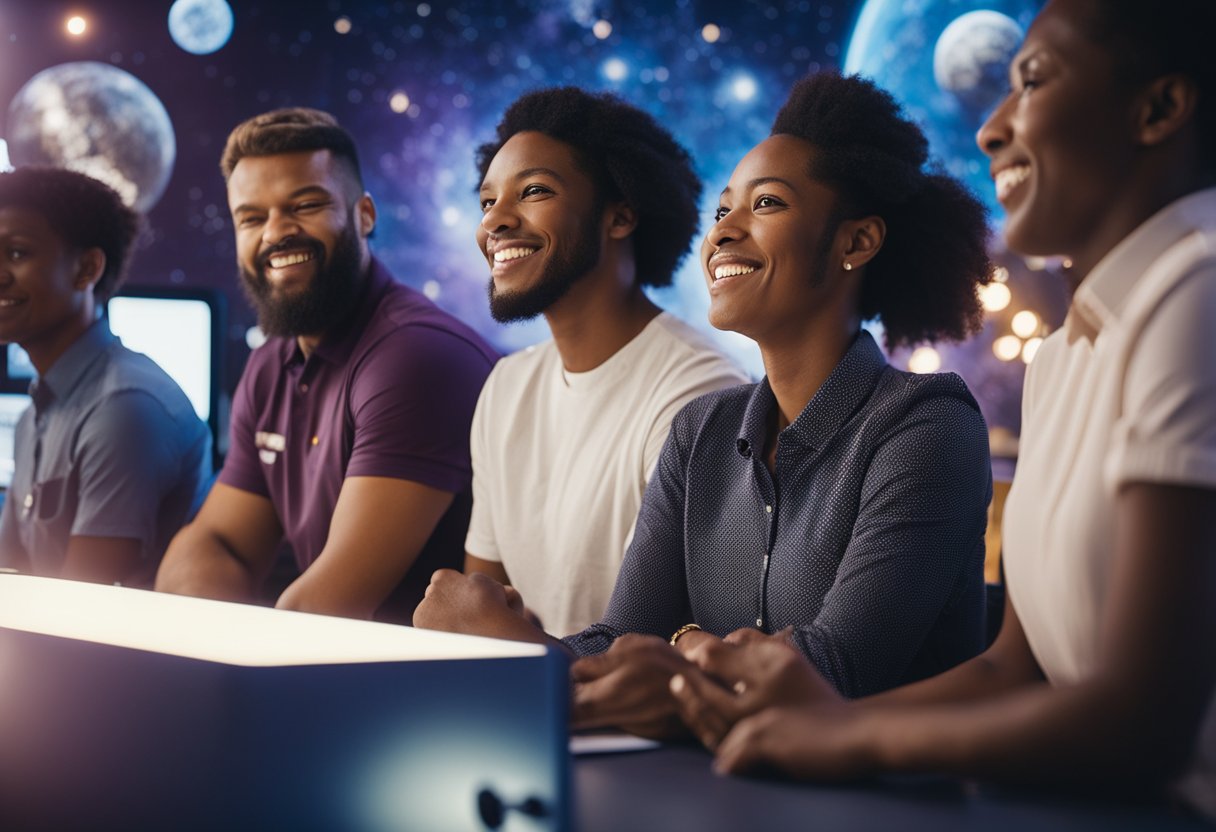
We recognise the importance of tailoring educational outreach to spark interest in specific groups. By focusing on bespoke programmes, we can foster a deep connection with space science and technology.
Girl Scouts and scout groups possess a natural curiosity about the world – space-themed programmes are an excellent way to channel their enthusiasm. We collaborate with organisations like Space Station Explorers to provide a curriculum that engages Girl Scouts in badge programmes focused on space science. These initiatives encourage them to explore concepts such as astronomy, physics, and environmental science.
Similarly, for scout groups, our partnership with educational entities introduces them to the wonders of the cosmos. The hands-on activities and collaborative tasks help scouts earn their space-themed badges, while instilling valuable teamwork and problem-solving skills.
Robotics is a cornerstone of space exploration, and our robotics programmes are designed to inspire teamwork and innovation. Through the construction and manipulation of robots, participants grasp the importance of engineering in space travel. These programmes often culminate in challenges where groups must work together to overcome obstacles akin to those found in the space environment.
We’ve noticed these robotics workshops are particularly effective for team building. As groups of individuals come together to tackle robotic tasks, they learn to communicate effectively and pool their talents. It’s in these moments that future careers in STEM fields may be ignited, inspired by the teamwork intrinsic in the field of robotics.
Engagement in these programmes doesn’t just offer educational benefits; they also sow the seeds for the future generation of space explorers and engineers. We’re enthusiastic about continuing our efforts in igniting a passion for space among these groups, possibly shaping the budding astronauts, scientists, and engineers of tomorrow.
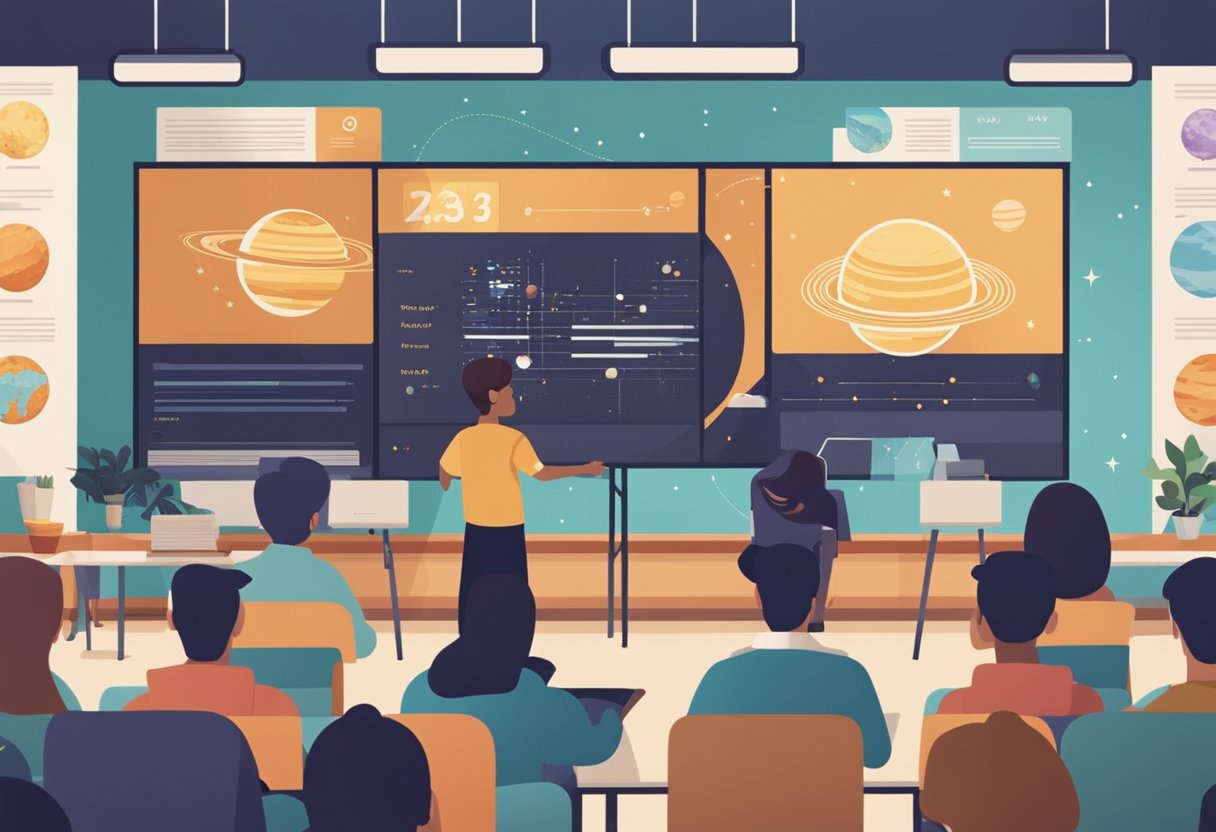
Space-themed educational outreach programmes are essential in sparking interest in STEM subjects and providing unique learning opportunities that connect classroom theory with real-world applications.
Space education offers secondary school students the chance to engage with science in a practical and inspiring manner. It encourages problem-solving skills and critical thinking, which are crucial for future academic and career endeavours.
These programmes provide hands-on experiences and foster an understanding of physics, mathematics, engineering, and technology through the exciting lens of space exploration. They often include interactive resources for field trips and challenges that align with national science and maths standards.
Courses range from general astronautics to specialised subjects such as satellite technology and planetary science. Some courses even allow students to simulate Space Camp experiences or participate in coding challenges relevant to deep space missions.
Charitable organisations often sponsor scholarships, fund educational resources, and provide direct support for space-related educational programmes. They play a vital role in ensuring such opportunities are accessible to a diverse range of students.
Educational outreach bridges the gap between the scientific community and the public, especially the younger generation. It translates complex scientific ideas into engaging programmes and inspires future careers in the space industry.
NASA actively leads initiatives like the App Development Challenge, encouraging students to contribute to space missions, and partnerships that award Artemis flown Space Badges to participants for their achievements in space-related activities.